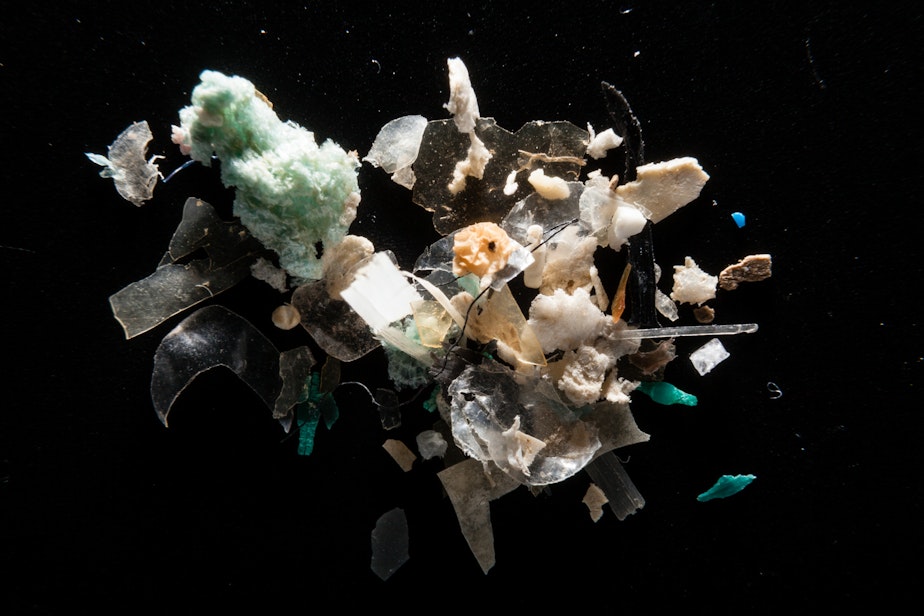Microplastics. It's what's for dinner

Microplastics seem to be in everything, everywhere, all at once. The tiny pieces of plastic are two-tenths of an inch or smaller and have been found in the ocean and our bodies. That's right, microplastics have been found in poop and even our blood. But how do we fix that?
Lawmakers here in Washington are moving to reduce the overall amount of plastic in our packaging.
Of course, laws take time to enact, especially complicated regulations. So in the meantime, what should we be doing and thinking about now?
The impact of microplastics on our organs and cells isn't a hundred percent clear.
"I'll tell you one thing we do know is it is everywhere," said Julie Masura, a geoscience lecturer at University of Washington Tacoma.
Masura has been studying and conducting microplastics pollution research since 2008. Her work focuses on microplastics floating in the ocean, lingering on the sea floor and ashore on beaches. She adds that more recently, however, even smaller particulates of plastic find a way into the air.
Sponsored
The small particulates or nanoplastics are what Masura said fuel the new studies and discoveries of microplastics in the blood or the lungs. These nanoplastics can be breathed in or digested.
And while the places micro- or nanoplastics show up in our ecosystem are vast, there is still little information confirming harm risks.
Even so, research confirms that there are harmful toxins found in plastic and that pollution is a leading cause of lung diseases.
Our bodies do the best they can to repel particles.
Early this year, microplastics in our ecosystem went viral. In March 2022, the New York Post reported on a now debunked study that claimed that on average people consume a credit card's worth of microplastics a week.
Sponsored
Around the same time, researchers in the Netherlands published a discovery of microplastics in the bloodstream. That research can be found at Environmental International.
These headlines prompted a flurry of bleak memes and hot takes, all of which point to the inevitability that at some point we will all ingest, absorb or inhale microplastics.
One photoshopped image shows microplastics added to the label of a McCormick seasoning bottle. In a laughing to keep from crying attempt, online hot takes call for microplastics flavor blasted chips, more recipes and less boring water (or water with glitter in it). This is coping but also alarming.
Masura said that awareness is key, but she's careful to sound the alarm in this way.
"I think the fact that we find the plastic in our waste, in our excrement is probably a good thing," she said. "That means that our body is doing its physiological duty, and it's getting rid of waste that is unusable to us."
Sponsored
For all of us, including the grim humorists, Masura said that personal choice can go along way.
"We can reduce the amount that we use and reduce the amount of the impact that it has on humans and also, of course, the whole ecosystem and the environment," she said.
Hear the full segment by clicking the audio above.





